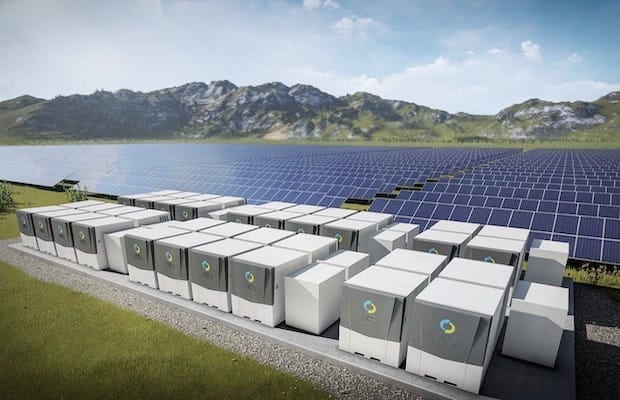The POWER Interview: Benefits of Adding Storage to Solar Power Systems
Credit to Author: Darrell Proctor| Date: Wed, 25 Jan 2023 22:38:25 +0000

Utilizing energy storage with a solar power system is a way for power generators to help balance the supply of energy with demand for electricity. Energy storage can be used during periods when the sun isn’t shining, and it also help support periods of high demand for power along the grid.
Many residential and commercial and industrial solar power system owners are looking at ways to connect their system to a battery so they can use that energy at night, or for backup energy in the event of a power outage. As solar power becomes less expensive, and more widely available, the market potential for adding storage to those systems will grow as well.
Two members of the Hitachi Energy team—Maxine Ghavi, senior vice president and Head of Grid Edge Solutions, and Marina Vujacic, PhD, Product Manager for Battery Energy Storage Systems—recently provided POWER with their insight into the solar-plus-storage market, touching on current trends for pairing the technologies and what the future could hold.
POWER: What are the major trends you’re seeing in the solar-plus-storage market?
Ghavi: Solar-plus-storage has been recognized as one of the key solutions towards ensuring more affordable, secure, and sustainable energy. Historically, the main application for the solar-plus-storage market has been backup power or fossil fuel replacements in microgrids, while more recently the main drivers seem to be demand charges mechanism and time-of-use rates with the latter driving a longer BESS duration trend (beyond the 4-hour mark).

Project boundaries such as battery price, net-zero policies, investment tax credits, local governments’ incentive programs and more have a huge impact on the deployment scale of this technology. Recent geopolitical tensions and the Covid-19 pandemic have highlighted the need for energy independence and triggered a set of initiatives, which will support continued market growth of this technology through the next decade. In the US, recent changes to the Inflation Reduction Act allow solar-plus-storage developers to choose between investment tax credits and be more strategic and flexible with how they’re designing and financing such projects.
POWER: Will there be growth in solar-plus-storage outside of utility-scale projects (i.e., residential or commercial/industrial applications)?
Ghavi: From a market scale perspective, the front-of-meter market is significantly bigger than behind-the-meter. However, the latter one is expected to become one of the key markets as the rising energy price trend together with natural disasters in recent years have raised awareness of self-generation and consumption in the residential and C&I sectors. This will be particularly the case in the regions with strong public awareness for energy transition.
POWER: Are there battery technologies that will be used as a replacement for (or alternative to) lithium-ion?
Ghavi: Lithium-ion will remain the dominant technology, which has benefited from the growing demand for electric vehicles. Looking forward, new technologies such as solid-state batteries or new chemistries such as sodium ion batteries might become available and present more raw material and environmentally friendly alternatives. Aside from batteries, there are also other energy storage technologies that look promising such as green hydrogen, which can add value in terms of self-sufficiency for storage durations from days to seasons. Multi-vector energy systems might leverage thermal storage as a cost-effective solution in the storage capacity range from hours to weeks.

POWER: How important is adding storage to a solar (or other renewable energy) project when it comes to grid integration and ancillary services?
Vujacic: Storage adds a fundamental value in balancing the variability of solar generation while at the same time enabling higher consumption of a self-generated renewable power. It enables bidirectional active power exchange with the grid, which enables storage to provide a wide range of applications that cannot be provided by solar-only systems such as stabilizing and operating isolated renewable-driven power systems. Special battery energy storage systems that can emulate the behavior of rotating machinery and act as the grid-forming element provide system strength and virtual inertia in large, interconnected grids. Hence, storage can pave the way towards 100% renewable energy penetration and a successful removal of current fossil based synchronous machines.
POWER: What are the cost advantages to having storage adjacent to a solar farm, as opposed to a standalone storage system?
Vujacic: The cost advantages vary greatly from project to project. By pairing solar systems with storage certain economic benefits are achieved from a single interconnection process, which can be a lengthy and costly process. Locational factors such as grid constraints, load profile, electricity prices, grid services market and more have great impact in the overall cost modeling of such systems. In addition, multi-assets control and monitoring paired with an energy management system with accurate demand planning and generation forecasting create additional revenues for co-located projects.
—Darrell Proctor is a senior associate editor for POWER (@POWERmagazine).
The post The POWER Interview: Benefits of Adding Storage to Solar Power Systems appeared first on POWER Magazine.